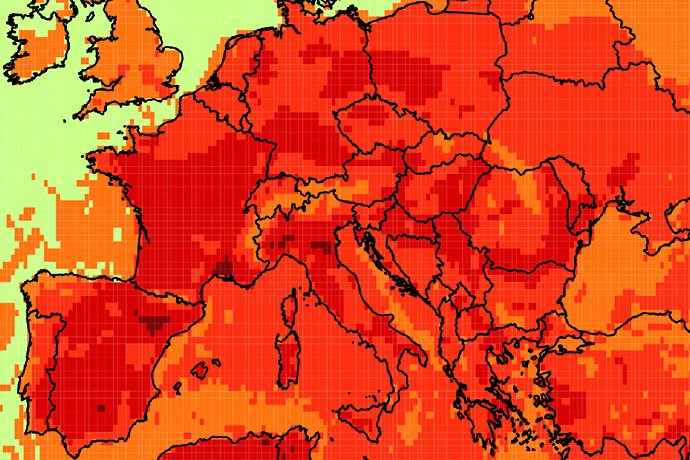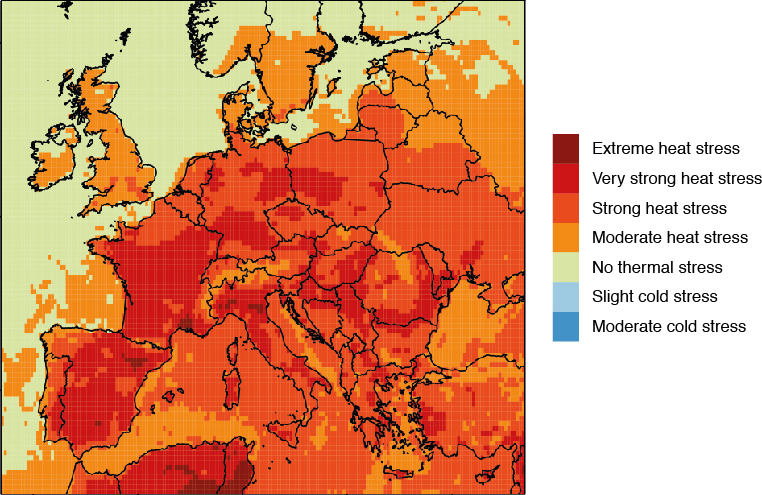

High heat stress values were seen during the June 2019 heatwave in Europe.
ECMWF has released global data on weather-induced, outdoor thermal stress and discomfort in human beings covering the period from 1979 to today.
The data have been calculated using weather information from ECMWF’s ERA5 reanalysis coupled with models of human thermoregulation and clothing insulation. They are available for download from the Climate Data Store run by ECMWF as part of the EU-funded Copernicus Climate Change Service (C3S).
The dataset, also known as ERA5-HEAT (Human thErmAl comforT), provides hourly Universal Thermal Climate Index (UTCI) values for any location. UTCI is a state-of-the-art indicator of thermal stress. It takes values on a scale ranging from extreme cold stress to extreme heat stress.
The dataset also includes mean radiant temperature (MRT), a measure of how human beings experience radiant fluxes.
Why thermal stress matters
Thermal stress due to extremes of heat or cold can negatively impact human health.
Extreme heat, for instance, is responsible for a variety of risks, including dehydration, cramps, and even death, especially during heatwaves.
Mortality and health problems, such as frostbite and hypothermia, can also result from exposure to extreme cold.

Cold stress as well as heat stress can pose a risk to human health. (Photo: Михаил Руденко/iStock/Getty Images Plus)
In 2004, the World Meteorological Organization called on meteorological and hydrological services to incorporate biometeorological forecasts into their products and services.
In addition to providing UTCI and MRT reanalysis data, ECMWF is working to provide high-resolution and probabilistic forecasts predicting UTCI and MRT values at the global scale.
Such forecasts are expected to become available to users in the second half of 2020.
How the data can be used
The UTCI and MRT dataset can be used to study thermal stress and discomfort in extreme events anywhere in the world and at any time from 1979 to near real time.
UTCI gridded data for the June 2019 European heatwave, for instance, show widespread conditions of thermal stress across the continent.

The map shows UTCI values between 24 June and 2 July 2019, according to the reanalysis dataset released by ECMWF.
As can be seen in the figure, extreme heat stress hazardous to human health occurred in parts of Spain, France and Italy.
The dataset makes it possible to compare such thermal extremes to what happened in the past, or to identify how such extremes have changed in space and time across the world.
UTCI and MRT data may also be incorporated into applications at the intersection between climate, environment and human health, for example in the fields of biometeorology, climate extremes, epidemiology and tourism.
The data are updated daily within five days of real time. They can be downloaded from a dedicated webpage via an easy-to-use interface. Users can select available records according to their needs and retrieve them for free.
There is also a general overview of the dataset and a guide containing details of the variables available and how they are calculated.
